Abstract
Two experiments demonstrated the efficacy of sample stimulus-control shaping programs for teaching arbitrary matching to 4 subjects who did not acquire the performances via standard methods (i.e., differential reinforcement and, in two cases, comparison intensity fading). All 4 had previously demonstrated identity matching with two-dimensional forms. Identity matching performances were then transformed into arbitrary matching by gradually changing the sample stimuli until they no longer resembled the comparison stimuli. Where applicable, these methods may have advantages over others that have been used after the failure of standard techniques.
Full text
PDF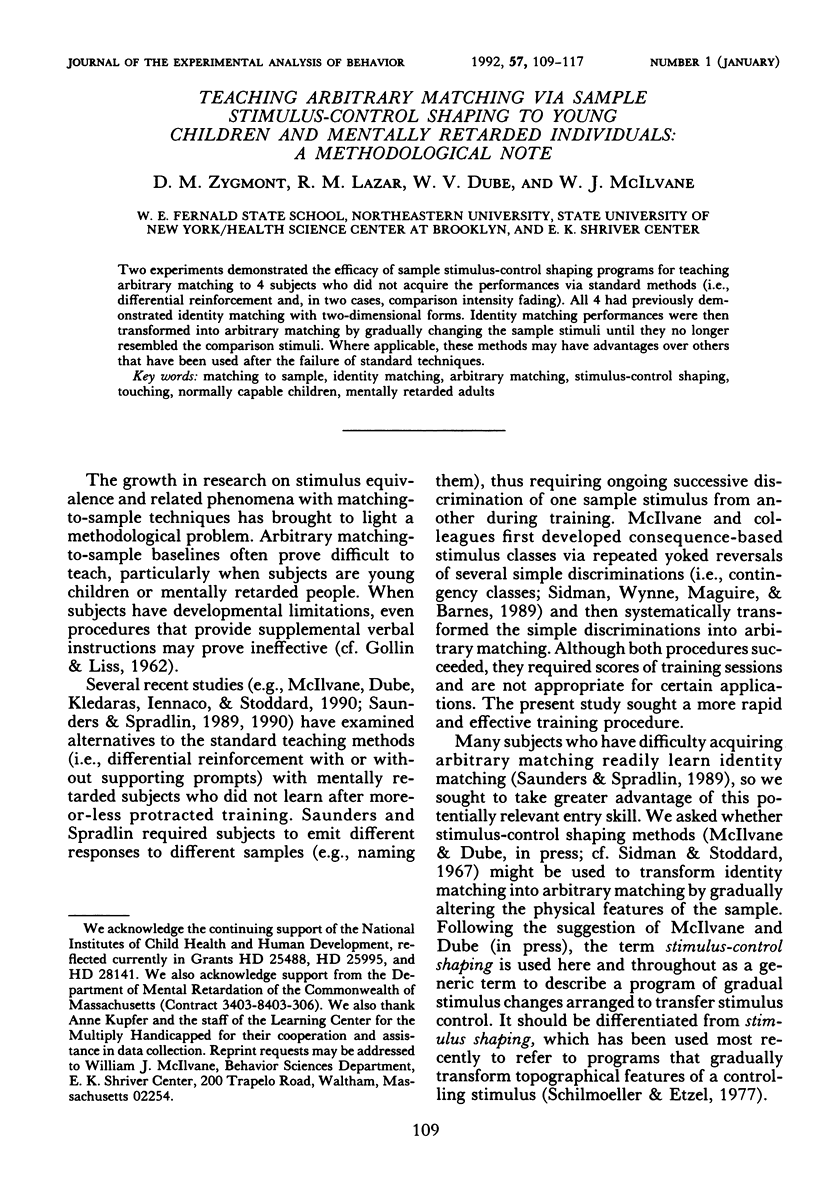
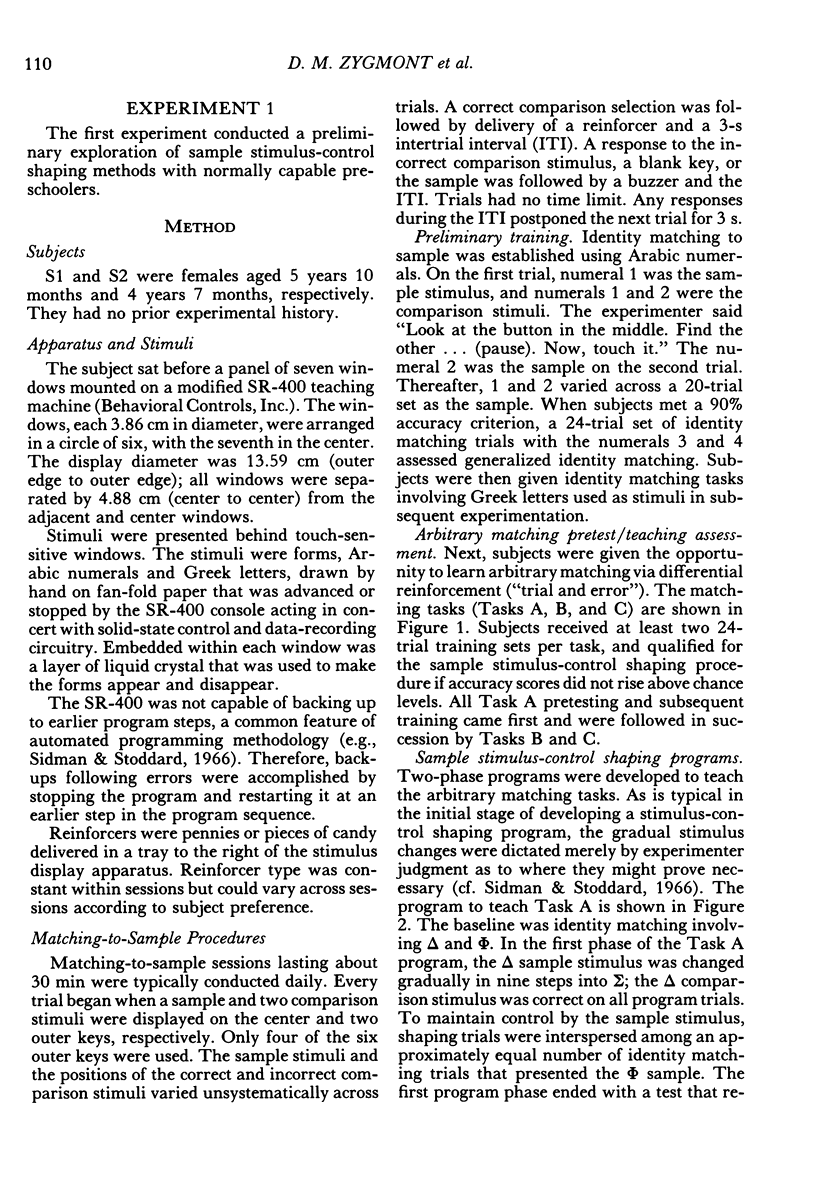
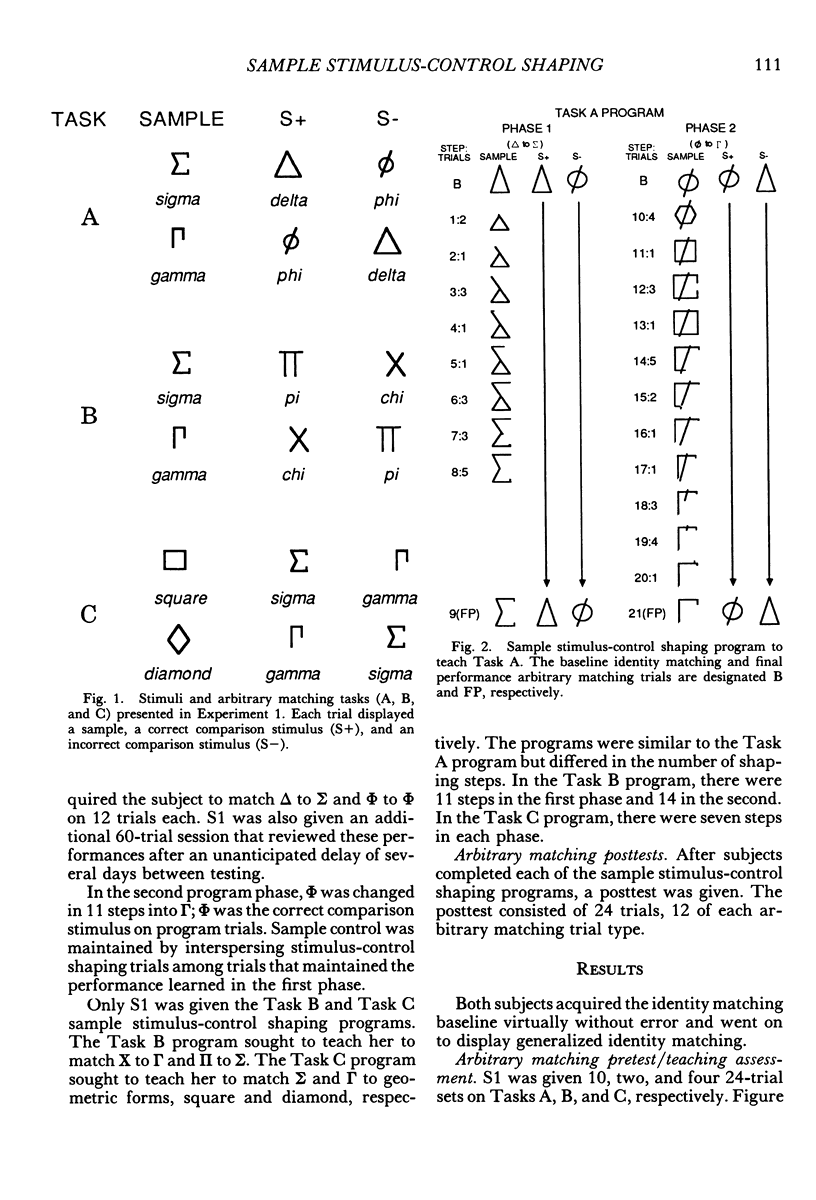
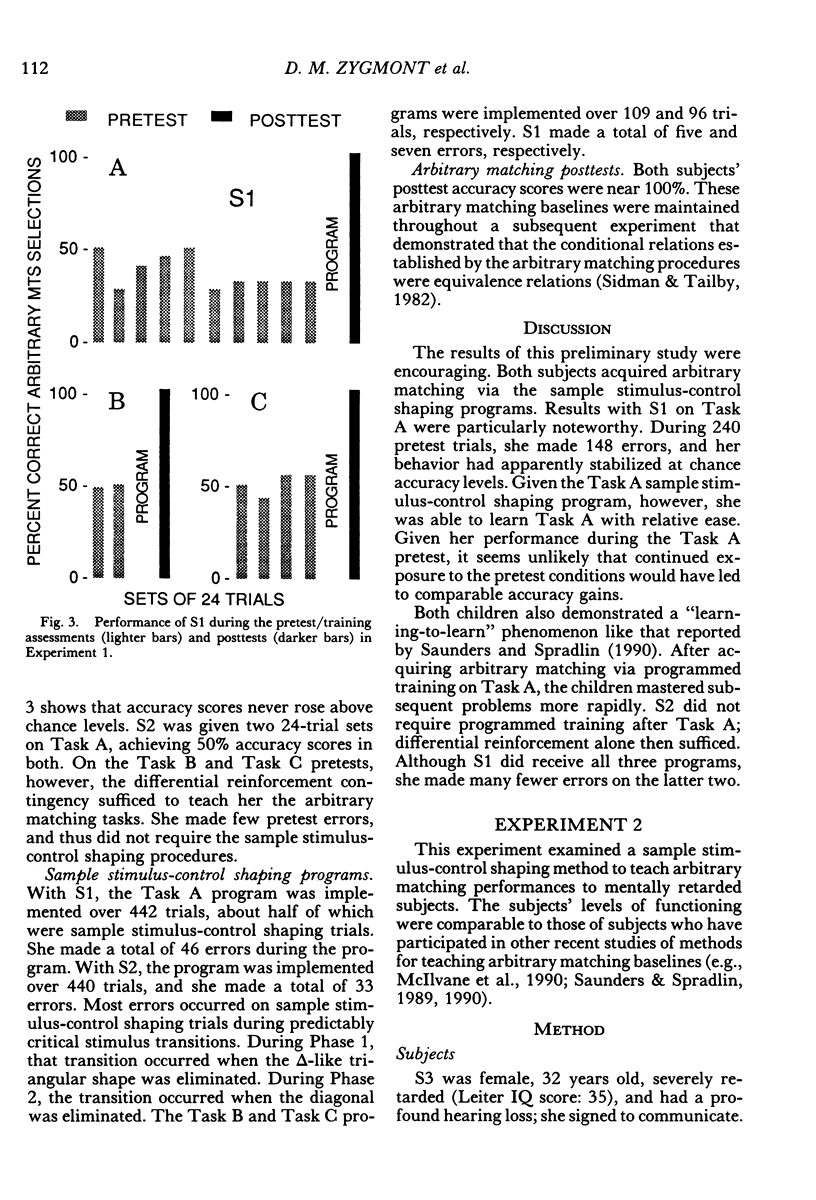
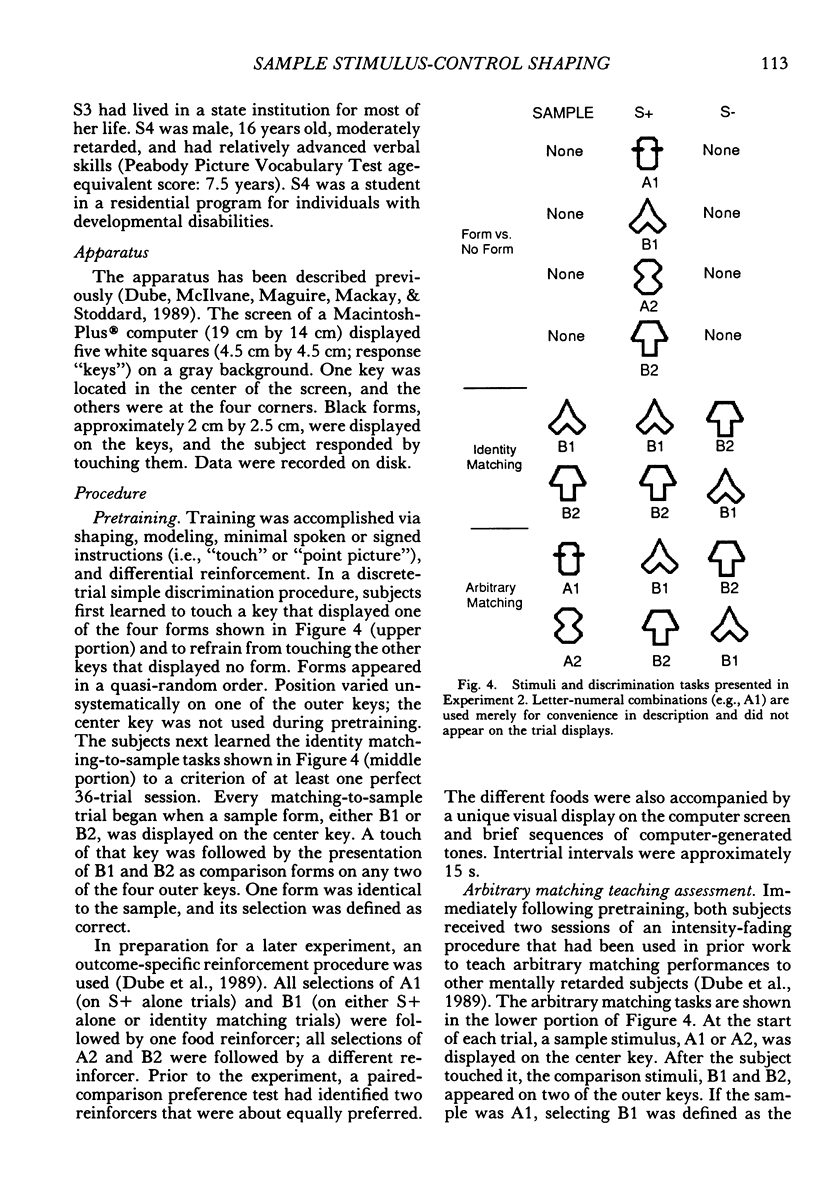
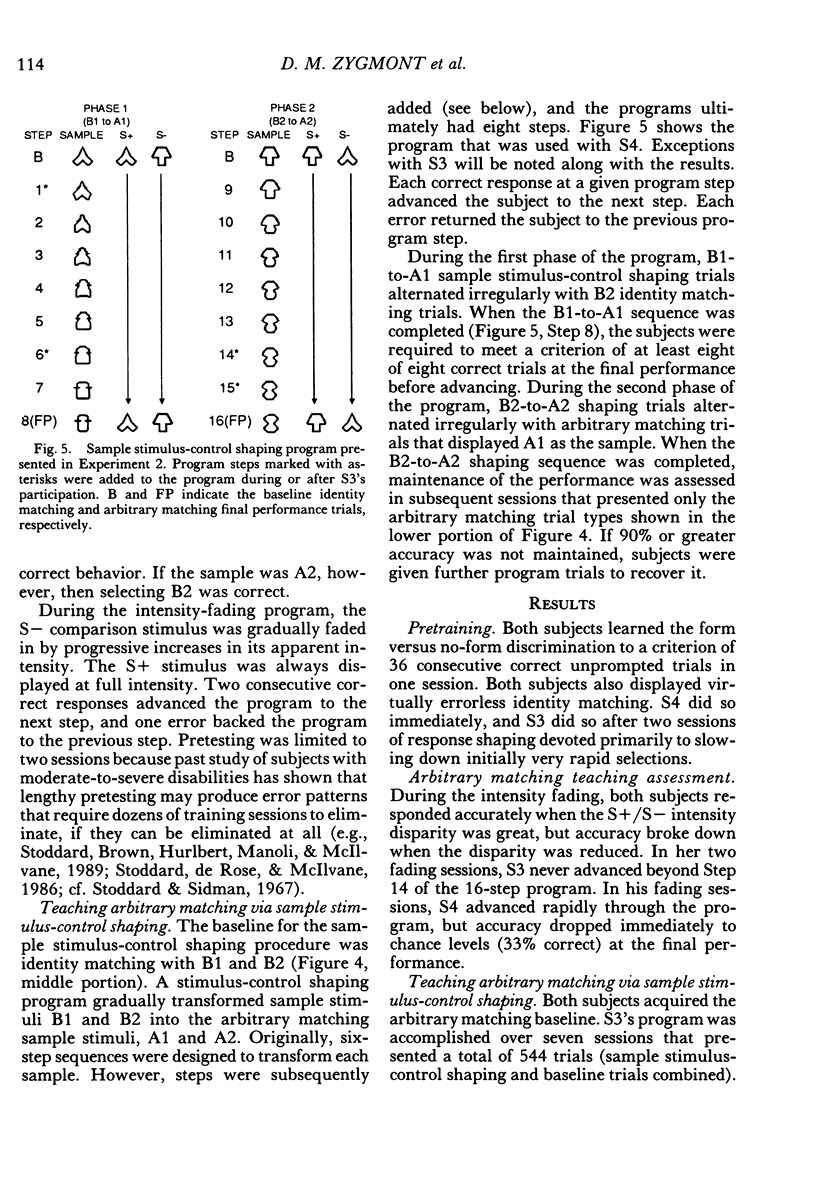
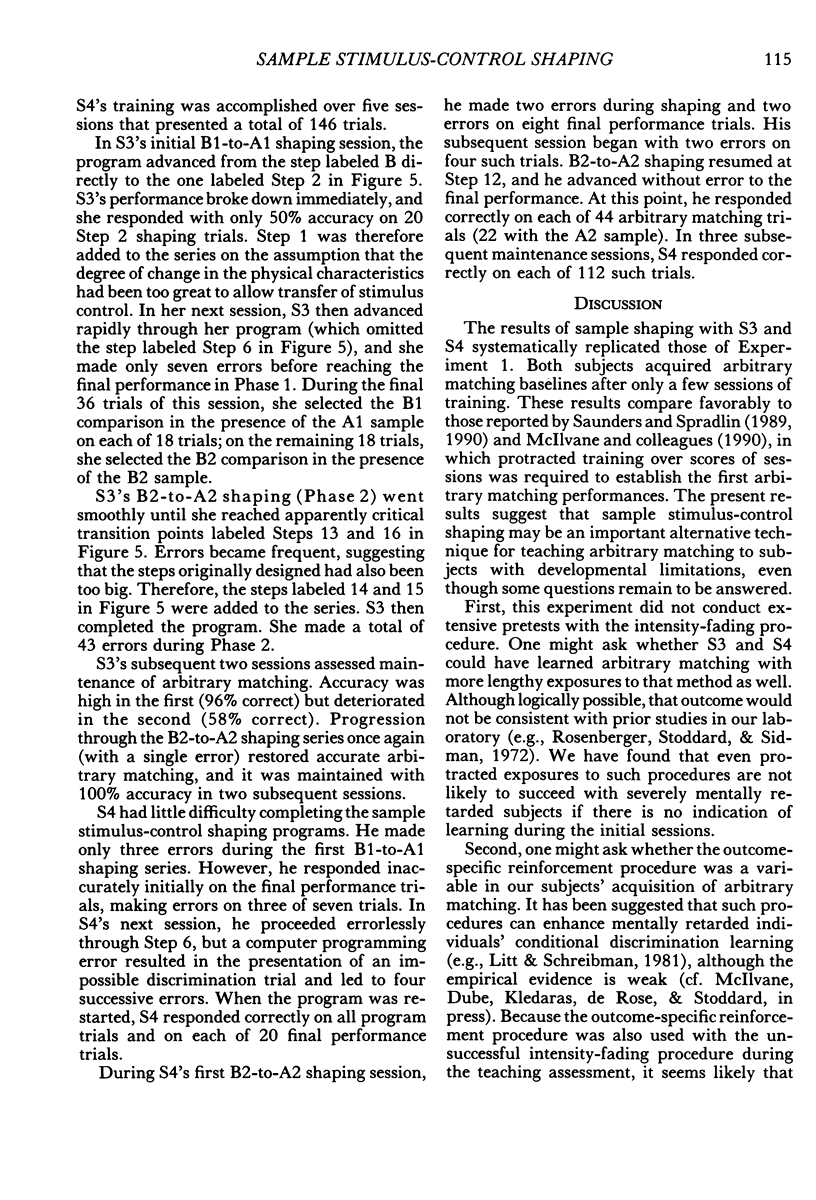
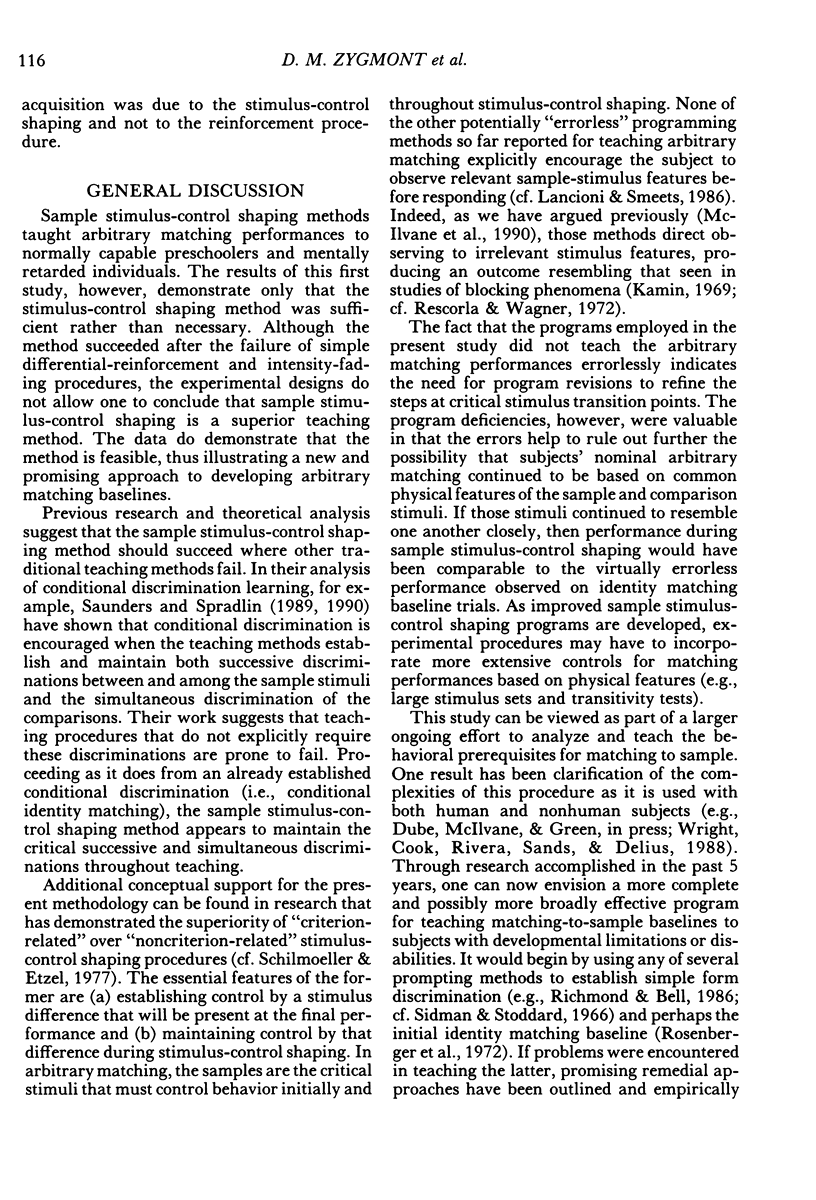
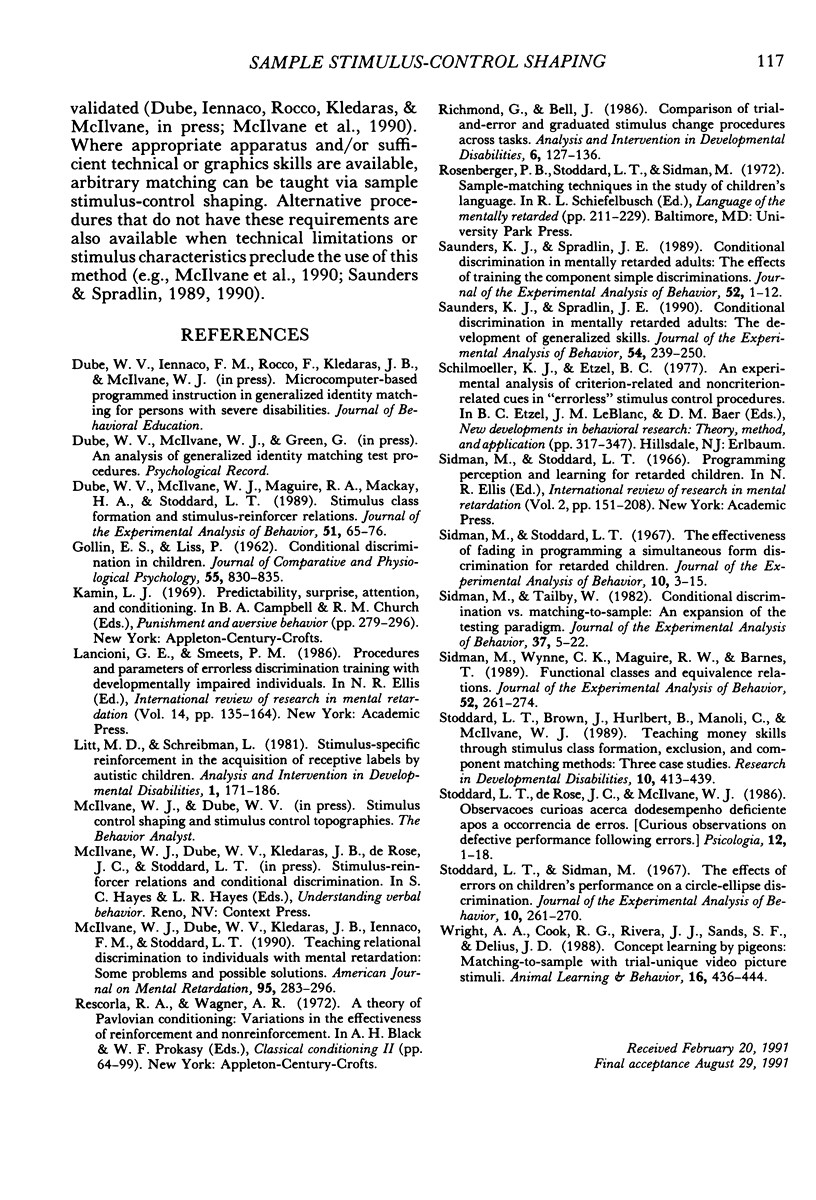
Selected References
These references are in PubMed. This may not be the complete list of references from this article.
- Dube W. V., McIlvane W. J., Maguire R. W., Mackay H. A., Stoddard L. T. Stimulus class formation and stimulus-reinforcer relations. J Exp Anal Behav. 1989 Jan;51(1):65–76. doi: 10.1901/jeab.1989.51-65. [DOI] [PMC free article] [PubMed] [Google Scholar]
- McIlvane W. J., Dube W. V., Kledaras J. B., Iennaco F. M., Stoddard L. T. Teaching relational discrimination to individuals with mental retardation: some problems and possible solutions. Am J Ment Retard. 1990 Nov;95(3):283–296. [PubMed] [Google Scholar]
- Saunders K. J., Spradlin J. E. Conditional discrimination in mentally retarded adults: the development of generalized skills. J Exp Anal Behav. 1990 Nov;54(3):239–250. doi: 10.1901/jeab.1990.54-239. [DOI] [PMC free article] [PubMed] [Google Scholar]
- Saunders K. J., Spradlin J. E. Conditional discrimination in mentally retarded adults: the effect of training the component simple discriminations. J Exp Anal Behav. 1989 Jul;52(1):1–12. doi: 10.1901/jeab.1989.52-1. [DOI] [PMC free article] [PubMed] [Google Scholar]
- Sidman M., Stoddard L. T. The effectiveness of fading in programming a simultaneous form discrimination for retarded children. J Exp Anal Behav. 1967 Jan;10(1):3–15. doi: 10.1901/jeab.1967.10-3. [DOI] [PMC free article] [PubMed] [Google Scholar]
- Sidman M., Tailby W. Conditional discrimination vs. matching to sample: an expansion of the testing paradigm. J Exp Anal Behav. 1982 Jan;37(1):5–22. doi: 10.1901/jeab.1982.37-5. [DOI] [PMC free article] [PubMed] [Google Scholar]
- Sidman M., Wynne C. K., Maguire R. W., Barnes T. Functional classes and equivalence relations. J Exp Anal Behav. 1989 Nov;52(3):261–274. doi: 10.1901/jeab.1989.52-261. [DOI] [PMC free article] [PubMed] [Google Scholar]
- Stoddard L. T., Brown J., Hurlbert B., Manoli C., McIlvane W. J. Teaching money skills through stimulus class formation, exclusion, and component matching methods: three case studies. Res Dev Disabil. 1989;10(4):413–439. doi: 10.1016/0891-4222(89)90041-3. [DOI] [PubMed] [Google Scholar]
- Stoddard L. T., Sidman M. The effects of errors on children's performance on a circle-ellipse discrimination. J Exp Anal Behav. 1967 May;10(3):261–270. doi: 10.1901/jeab.1967.10-261. [DOI] [PMC free article] [PubMed] [Google Scholar]


